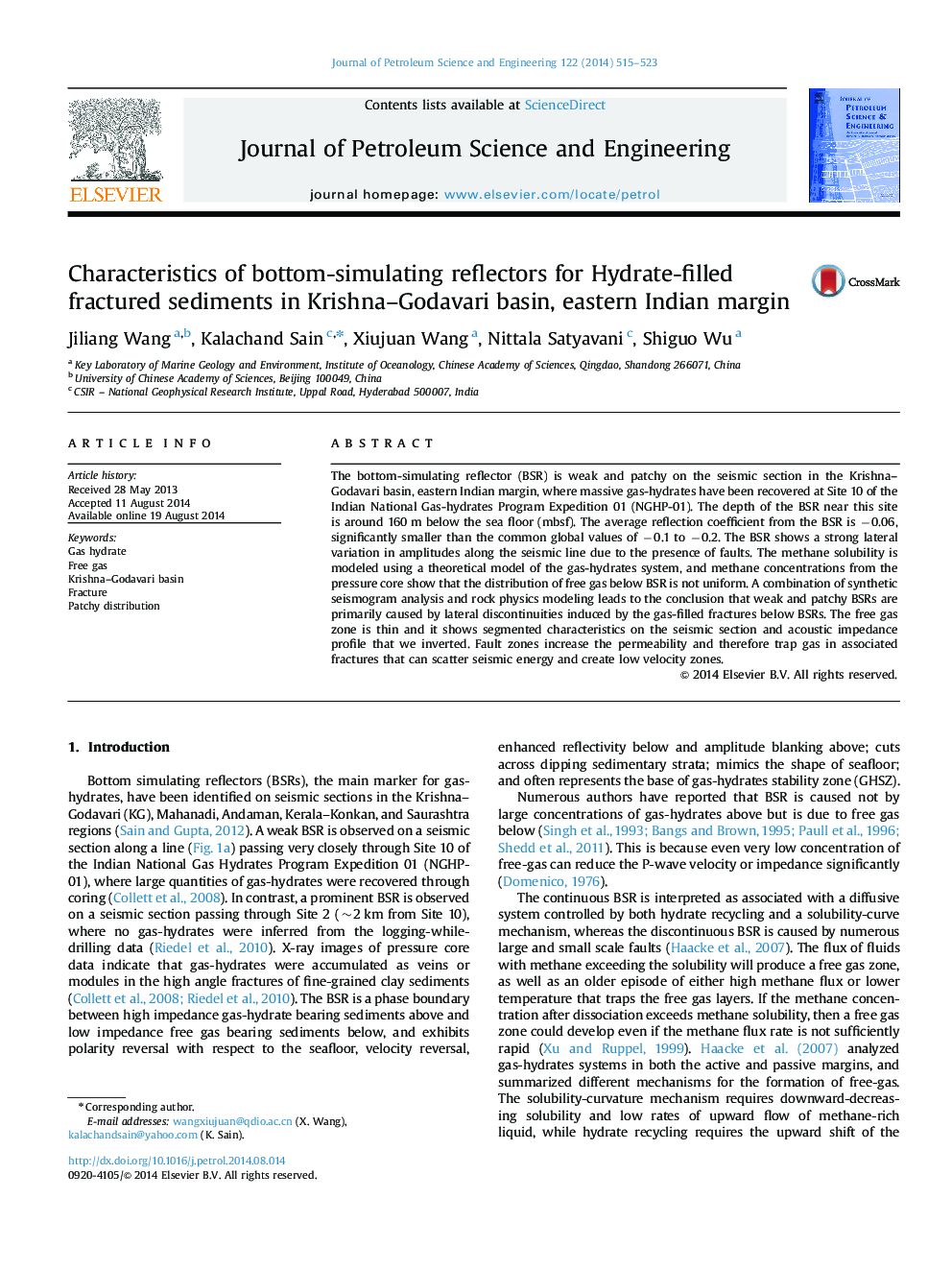| کد مقاله | کد نشریه | سال انتشار | مقاله انگلیسی | نسخه تمام متن |
|---|---|---|---|---|
| 8127001 | 1522819 | 2014 | 9 صفحه PDF | دانلود رایگان |
عنوان انگلیسی مقاله ISI
Characteristics of bottom-simulating reflectors for Hydrate-filled fractured sediments in Krishna-Godavari basin, eastern Indian margin
ترجمه فارسی عنوان
ویژگی های بازتابنده های شبیه سازی پایین برای رسوب های شکست خورده حاوی هیدرات در حوضه کریشنا-گداواری، حاشیه شرقی هندی
دانلود مقاله + سفارش ترجمه
دانلود مقاله ISI انگلیسی
رایگان برای ایرانیان
کلمات کلیدی
هیدرات گاز، گاز رایگان، حوضه کریشنا غدیری، شکستگی، توزیع پچ
موضوعات مرتبط
مهندسی و علوم پایه
علوم زمین و سیارات
زمین شناسی اقتصادی
چکیده انگلیسی
The bottom-simulating reflector (BSR) is weak and patchy on the seismic section in the Krishna-Godavari basin, eastern Indian margin, where massive gas-hydrates have been recovered at Site 10 of the Indian National Gas-hydrates Program Expedition 01 (NGHP-01). The depth of the BSR near this site is around 160Â m below the sea floor (mbsf). The average reflection coefficient from the BSR is â0.06, significantly smaller than the common global values of â0.1 to â0.2. The BSR shows a strong lateral variation in amplitudes along the seismic line due to the presence of faults. The methane solubility is modeled using a theoretical model of the gas-hydrates system, and methane concentrations from the pressure core show that the distribution of free gas below BSR is not uniform. A combination of synthetic seismogram analysis and rock physics modeling leads to the conclusion that weak and patchy BSRs are primarily caused by lateral discontinuities induced by the gas-filled fractures below BSRs. The free gas zone is thin and it shows segmented characteristics on the seismic section and acoustic impedance profile that we inverted. Fault zones increase the permeability and therefore trap gas in associated fractures that can scatter seismic energy and create low velocity zones.
ناشر
Database: Elsevier - ScienceDirect (ساینس دایرکت)
Journal: Journal of Petroleum Science and Engineering - Volume 122, October 2014, Pages 515-523
Journal: Journal of Petroleum Science and Engineering - Volume 122, October 2014, Pages 515-523
نویسندگان
Jiliang Wang, Kalachand Sain, Xiujuan Wang, Nittala Satyavani, Shiguo Wu,
